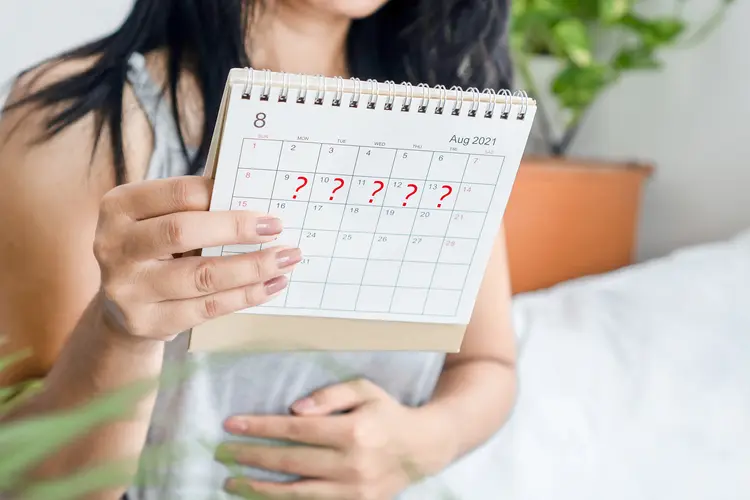Ovulation is a natural part of the menstrual cycle, but for some women, it can come with a bit of pain or discomfort. This pain, often called mittelschmerz, usually feels like a dull ache or a quick sharp twinge on one side of the lower belly. Many times, it’s nothing to worry about and simply means the body is releasing an egg. However, when the pain becomes stronger than usual or lasts too long, it might be a sign that something else is going on. Understanding what’s normal and what’s not can help ease any worry and keep your reproductive health in check.
Here, we will look at why ovulation pain happens, what’s considered normal, and when it might be time to see a doctor.
Understanding Ovulation Pain (Mittelschmerz)
Ovulation pain, which is also called mittelschmerz, normally happens midway through your cycle when your body releases an egg. Some people don’t feel anything, while others feel a little soreness or a stinging pinch that can last for a few minutes or even a day or two.

An egg is released when a follicle in an ovary breaks open. Eventually, the egg makes its way down the fallopian tubes to the uterus. Doctors don’t know exactly what causes ovulation discomfort, but they think it has something to do with the changes that place in the body during ovulation.
Recommended: Ovulation Pain vs Period Cramps: How to Tell the Difference
The pain is often felt on one side of the lower belly, depending on which ovary releases the egg. For most people, this pain is a normal part of the menstrual cycle and nothing to worry about. The feeling can range from a slight twinge to a sharp pain that makes it hard to move around for a while.
What Causes Pain During Ovulation?
Mittelschmerz happens when the follicle opens up and lets go of its egg during ovulation. Some women have mittelschmerz every month, whereas others only get it now and then.
Your ovaries are doing something that aches when your body produces an egg. A follicle is a little sac that holds the egg as it matures. When the egg is ready, the sac gets bigger and rips open, letting the egg out. A lot of individuals harmed because of that small pop.
When the follicle breaks, blood or fluid leaks out and irritates the lining of your abdomen (peritoneum), which also causes pain.
Is It Normal to Feel Pain During Ovulation?
Yes, feeling a bit of pain during ovulation is completely normal for many women. Some people barely notice it, while others feel a short, sharp twinge or a dull ache that lasts a few hours to a couple of days. The pain usually shows up right in the middle of the menstrual cycle and can happen on either side of the lower belly, depending on which ovary releases the egg that month.
Recommended: Painful Ovulation (Mittelschmerz): Causes, Symptoms, and How to Find Relief Naturally
Most of the time, you don’t need to bother about this pain. Your body is just doing what it normally does when an egg is released from the ovary. The level of pain can also change from month to month. Sometimes it is extremely weak and sometimes it is very strong. It could be more obvious if you’re stressed, not drinking enough water, or have a small bit of inflammation.

If the pain isn’t too intense and goes away on its own, it’s usually just a normal part of ovulation. But if it’s truly uncomfortable or gets worse every month, you should see a doctor to make sure nothing else is wrong.
Signs Your Ovulation Pain Is Nothing to Worry About
Most ovulation pain is mild and harmless, and there are a few signs that show it is nothing to worry about.
- Pain only lasts a few hours to a few of days.
- Without therapy, discomfort goes gone on its own.
- It feels like a dull discomfort or a quick pang in the lower belly.
- Usually happens on one side and can swap sides every month.
- The pain is moderate and doesn’t get in the way of everyday tasks.
- There are no other strange symptoms, including profuse bleeding, fever, nausea, or vomiting.
- Happens at about the same time each month.
When to Worry About Ovulation Pain
While most ovulation pain is normal, there are times when it could signal a more serious issue. It is important to pay attention to the intensity, duration, and accompanying symptoms.
Recommended: Best Supplements to Regulate Hormones for Spotting
You should consider seeing a doctor if you notice any of the following:
- Pain is severe or suddenly intense.
- Discomfort lasts longer than a couple of days.
- Pain is accompanied by heavy bleeding or spotting.
- There is fever, nausea, or vomiting along with the pain.
- Pain is recurring every month and gradually getting worse.
- Other symptoms like unusual discharge, bloating, or pelvic pressure are present.
- Pain does not follow the usual pattern of your menstrual cycle.
Persistent or severe pain may be related to conditions such as ovarian cysts, endometriosis, pelvic inflammatory disease, or other reproductive health issues. Seeing a healthcare professional can help rule out these concerns and provide proper treatment.
What to Do if Ovulation Pain Gets Bad

Severe ovulation pain might be scary, but there are things you can do to deal with it and keep your health safe:
- Go to the doctor: If the pain is very bad, lasts longer than normal, or is accompanied by other symptoms like heavy bleeding, fever, or nausea, make an appointment to see a doctor.
- Keep a record of your symptoms: Write down when the pain happens, how long it lasts, which side it hurts, and any other symptoms that come with it. This helps your doctor figure out what’s going on.
- Be careful when you use pain relief: Ibuprofen and paracetamol are two over-the-counter medications that can help ease pain, but be sure to follow the directions on the package.
- Put some heat on it: A warm compress or heating pad on the lower belly can help relax the muscles and ease the pain.
- Rest and drink plenty of water: Light activity, enough water, and rest can help your body deal with the pain.
- Don’t do anything too hard: If the pain is sharp or strong, wait until your body has had time to heal before working out or lifting heavy things.
Severe pain is not usually a symptom of something dangerous, but taking these steps and visiting a healthcare professional can help you find relief and rule out any underlying disorders.
Final Thoughts
Ovulation pain is a common experience for many women and is usually a normal part of the menstrual cycle. Feeling a mild ache or brief twinge in the lower belly is often nothing to worry about and simply shows that the body is releasing an egg as it should.
Pay attention to your pain and any changes in its pattern. Mild discomfort that lasts a short time and does not interfere with daily life is typically harmless. However, severe, persistent, or unusual pain may indicate an underlying condition and should be checked by a doctor.
Understanding what is normal and when to seek help can bring peace of mind and help maintain reproductive health. Keeping track of your cycle and symptoms makes it easier to know what to expect and when to get professional advice.
